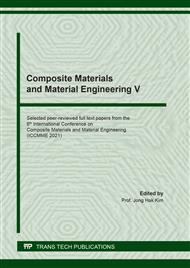p.112
p.123
p.129
p.135
p.147
p.153
p.163
p.171
p.177
3-Dimensional Microstructure Investigation of High Temperature Corrosion of Boiler Tube Material
Abstract:
The material of the tubes has suffered localized overheating and corrosion, probably as a result of local heat flux impingement phenomenon, combined with high temperature corrosion. Boiler tubes that experienced failure indications were tubes material SA 213 T22 with the dominant alloy elements is Cr. Materials with these specifications are which should be resistant to corrosion, so it is necessary to carry out laboratory testing to answer suspected indications of failure. The methodology of analysis and identification carried out is by observing the microstructure in 3 dimensions supported by other mechanical tests, namely visual observation, hardness testing, chemical composition testing using SEM and EDAX and testing the chemical composition of the material using a spectrum analyzer. Observation using an optical microscope shows that the microstructure condition of the tube is ferritic and the results of 3D metallography observations show that the tube has undergone micro crack with a measured depth of 1853,28 μm. After the metallography testing is carried out, the hardness test is carried out with the hardness vickers (HV) unit and the minimum hardness is 149 HV and the maximum hardness is 177 HV. Testing of the chemical composition of the deposit showed that there were chemical elements found in seawater that trigger corrosion such as sodium and chlorine which enter the water vapor system. The results showed that the tube had pitting corrosion, which was indicated by the presence of microcrack at the grain boundaries and an oxide deposit had been formed which would cause an overheating phenomenon and deterioration.
Info:
Periodical:
Pages:
147-152
Citation:
Online since:
June 2021
Authors:
Keywords:
Price:
Сopyright:
© 2021 Trans Tech Publications Ltd. All Rights Reserved
Share:
Citation:


